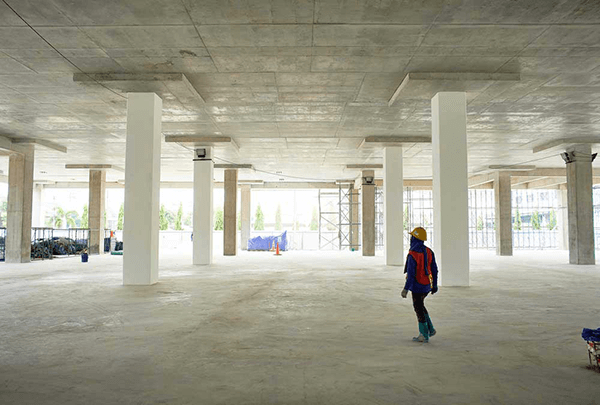
Each year, millions of dollars are spent correcting and replacing floor finishes the have been damaged by moisture migration. At Zenith Painting and Coatings, we specialize in concrete flooring and moisture testing. Our team of professionals are experienced and have years of knowledge to help mitigate all concrete moisture issues. We know that concrete issues can be difficult to understand. Here is a list of the “concrete things you should know” before starting any new concrete projects!
Cement vs Concrete
Cement is an essential building material. There are 5 types of cement with the most common mixture being type 1. Type 1 cement is made to form mortar which can be used in many different building environments. Cement type 1 is made by mixing sand, water, and when coarse and fine aggregates are added, this mixture transforms into concrete.
Concrete is made when cement, water, sand, are mixed together with coarse and fine aggregates. As the compound is being mixed, the different elements combined creates a chemical reaction. This chemical reaction then turns into paste otherwise known as concrete.
Why is Moisture Testing Essential?
Residual moisture in concrete will cause serious floor damage over time. Floor coverings often fail due to moisture-related concrete problems. Many property owners need to be concerned with the effects of residual moisture in the foundation of their buildings as well as on any overlay. Floor coatings, carpet, vinyl, rubber, wood, and laminates are all affected to one degree or another by pH complications and excess water vapor emissions.
Methods of Moisture Testing
ASTM D 4263 (plastic sheet method)– Contractors place a sheet of thick plastic over the layed cement for 16-24 hours. The plastic sheet will then be examined for any moisture that has been collected under the sheet. This method of testing can tell contractors whether or not there is moisture present, but it cannot tell them how much. This method is rarely used due to its inaccuracies.
ASTM F-1869 (calcium chloride)– This method of testing was developed more than 40 years ago and was the standardized testing method until ASTM F 2170 was released. As a substance, calcium chloride has the ability to absorb moisture which enables contractors to weigh the calcium chloride before and after to determine how much moisture is present. The testing is conducted by starting off with pre-weighed calcium chloride which is then placed in trays on the concrete. The tray is then covered and sealed with a plastic sheet and left to cure for 60-72 hours. After it has cured, the calcium chloride will be weighed again to determine the amount of moisture present in the concrete.
ASTM F 2170– In this testing method, holes are drilled into the concrete, cleaned, and left to equilibrate for 72 hours. Probes are then inserted to collect relative humidity and temperature readings from 40% depth. This is by far the most effective and efficient way to detect moisture vapor emissions. This is also the recommended testing method by ASTM standards.
What is a Moisture Mitigation System?
Moisture mitigation systems are only necessary when there are confirmed moisture issues present within the concrete. These systems work by isolating moisture to protect floor finishes.
At Zenith Painting and Coatings we know exactly how to handle all moisture emission issues. Call us today to schedule your appointment!


